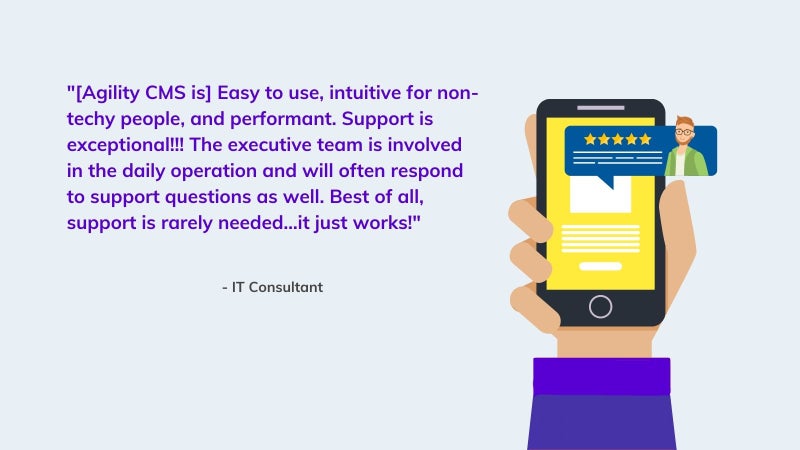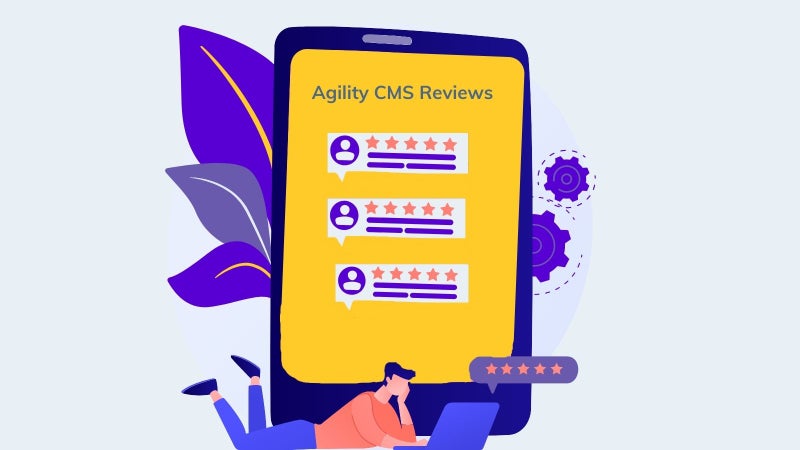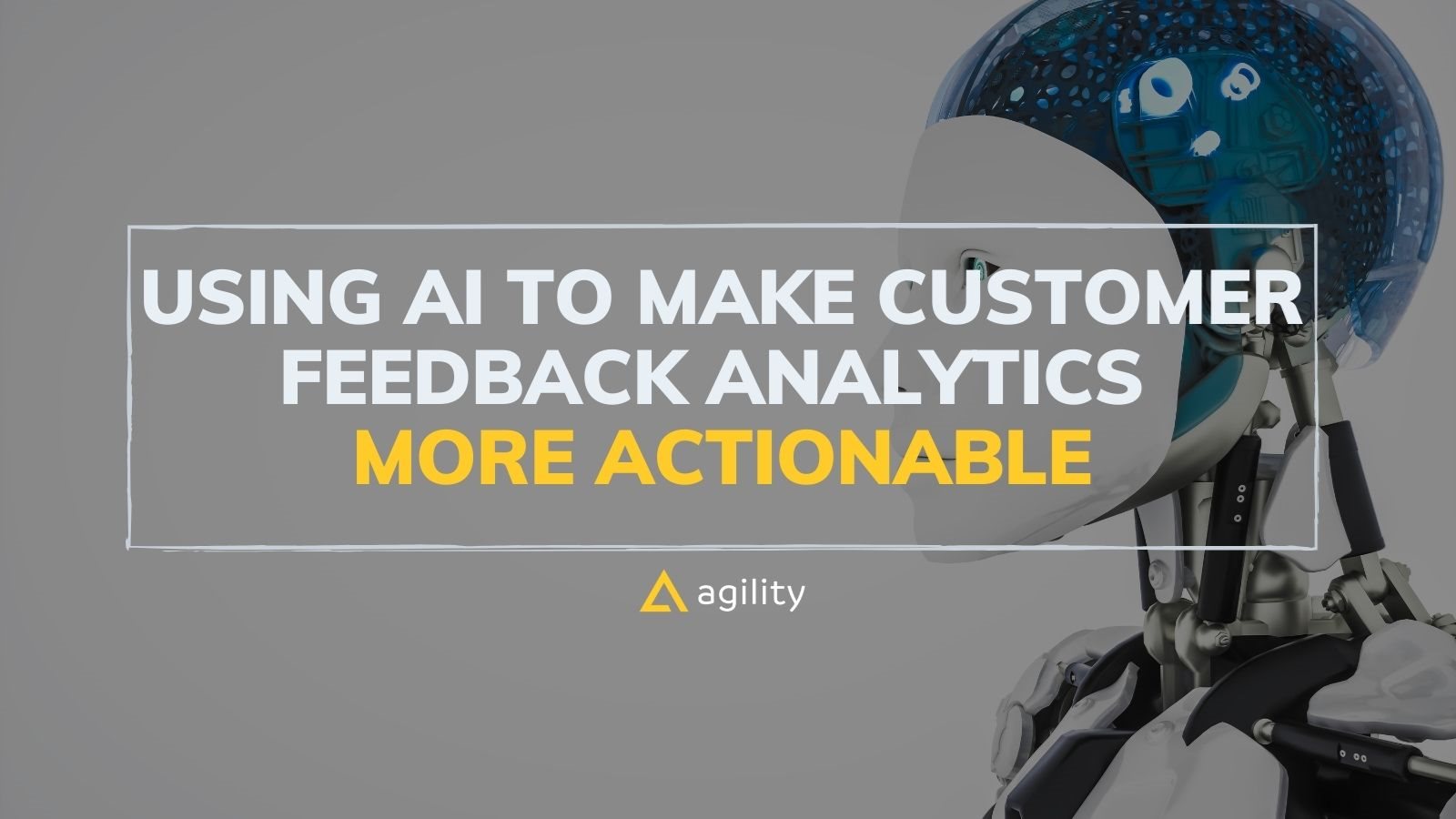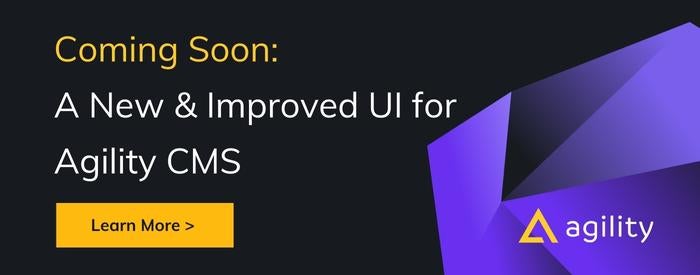Sir David Brailsford, the leader of Team Sky once said, “clear feedback is the cornerstone of improvement.” Whereas this statement might have been coined by a cycling pundit, it applies to every one of us and in all aspects of our daily lives; nothing is static, everything is evolving.
In order to contrive everything we do, we should embrace useful insights gathered from feedback, and the present-day world of business isn’t an exception.
Owing to tremendous competition and dynamism in the market, business owners have to ensure that they offer their customers an impeccable experience that’s revamped and individualized to meet their particular needs.
To substantively satisfy their customers, it is paramount to comprehend their areas of dissatisfaction and work on solving them. And one of the best ways of doing it is by evaluating their feedback to gather gainful insights regarding their preferences.

While conventional methods of collecting and analyzing feedback remain exceptionally fruitful and valuable, contemporary tech-based reality needs consumer feedback firms to embrace advanced technologies to enhance the efficiency and efficacy of their surveys.
Modern technologies such as artificial intelligence (AI), Big Data technologies, machine learning (ML), and Deep Learning among others can assist these organizations to improve their feedback analytics making them more actionable.
Reports published by Marketing Charts revealed that artificial intelligence has the capacity to significantly revolutionize the market research industry. The study showed that in a few years to come, AI will take over those complex and tedious methods of a market survey like designing survey questionnaires and finding insights from what consumers say.
Tasks to be taken over by artificial intelligence (AI)To enhance customer experience, a combination of artificial intelligence and automation works exemplarily well in conducting online surveys. Integrated, the tech tools can assist in making the best feedback analytics as well as figuring out peculiar methods of filling the gaps and improving customer experience.
Why is AI so popular?
AI exhibits myriads of opportunities for the enterprise that leverage huge sums of data. Solutions like machine learning allow companies to uncover specific insights found within their databases and clearly present data patterns.
Consequently, they polish up their targeted efforts to deliver more customized messages while at the same time enhancing the overall customer experience.
That said, AI is a modern technology that’s taking the data industry by storm. As a matter of fact, research conducted by the International Data Corporation showed that Artificial Intelligence solutions investment rose by 50% in the period between 2016 and 2021. Also, the study revealed that out of all enterprises that have invested in AI, 83% are reaping very handsomely, thanks to the benefits that come with AI solutions.
Benefits of AI in the Transformation of Customer Experience

Automation using artificial intelligence is an effective boon that allows the accomplishment of repetitive and tedious tasks within a few seconds. These programmed tech-based tools operate without human intervention and offer better and more reliable results. More importantly, they are fair and treat all the feedback equally implying that the results are transparent and unbiased.
Other benefits associated with the use of AI-powered analytic tools include:
- Automated, real-time, and individualized mail follow-ups
- Forecasting customer expectations and alerting the relevant professionals on the issues.
- Spotting/detecting strange emotions and behaviors of customers and any other factor that shows declining interest associated with poor quality customer experience.
- Assist in the formulation of unique survey insights through which the business can get feedback faster and easier.
- Assist in determining ways of reaching and connecting with new customers.
How AI and automation assist the organization to make Customer Feedback Analytics More Actionable?

Alongside hunting for new customers, it is equally paramount to nurture your existing customer base. And the most important thing is to win their loyalty. Since this doesn’t come by chance, you need to offer them a quality customer experience that is achievable through carefully-defined feedback analysis.
The exercise enables you to gather insights regarding their areas of disharmony and their needs. Consequently, using better ideas, you can improvise your services by striving for better future strategies. Often, customers give their feedback via several platforms like phone calls, face-to-face conversations, online chats, social media, and surveys among others.
Nevertheless, it’s challenging to handle and analyze large chunks of data that the organization receives in the form of customer feedback. Luckily, AI-based platforms have solved this. Here, the two main subsets of artificial intelligence (AI); Natural Language Process (NLP), Natural Language Generation (NLG), and Machine Learning (ML) assist in the effective analysis of customer feedback.
In AI-powered solutions, Machine Learning (ML) makes predictions by leveraging historical feedback data. Here, marketers have got a sound insight into what the future holds regarding their customers’ next moves. Natural Language Processing (NLP) relates with insights like sentiments behind the outcome of the feedback as well as the classification of text strings to reveal patterns and trends within these feedbacks.
AI technologies Integration
Some of the benefits of AI-powered tools in customer feedback analytics include:
1. Seamless Text Analysis
AI-enabled tools can comfortably evaluate customer conversations and conduct a qualitative analysis of customers’ feelings and desires. Additionally, the tools can spot the frequency of some terminologies and define their feelings. Truly, sentiment analysis is one way of gauging customers’ thoughts and emotions towards your business.
Depending on the terminologies used and emotions, the tool can divide the feedback into three categories; positive feedback, neutral feedback, and negative feedback. At this point, you should focus more on the negative reviews and work on improving on your weak points.
This way, AI-powered tools assist you in keeping the existing customer base and more importantly winning their loyalty. Consequently, this will certainly lead to the conversion of new customers into your business. Besides, these AI-based tools help you in enhancing your digital visibility, grabbing new and quality leads, and cultivating a harmonious bond with your long-term customers.
In-text analytics, various aspects are looked into such as word count (words frequency), word pairing, sentiment analysis, et al.
- Word count: it’s the simplest text analytics form where words or topics are counted and ranked depending on their frequency in the text.
- Word pairing: sometimes, a cluster of words can offer more substantive insight than just a single word. For example, words like “monthly”, “costs”, or “expensive” can be clustered together to give a more specific insight. In this line, “your product’s monthly costs are very expensive,” the cluster of words offers a more specific insight about what the customers want.
- Sentiment analysis: the old clique “one man’s meat is another man’s poison” applies in reviewing. Usually, visitors will express their views in their own version and depending on what they feel about your services. But all in all, some things are good and will never be bad, the same way some bad things won’t be good. That said, text analytics examine the severity of these views based on positive views, neutral views, and negative views combined with sentiments affiliated to commonly used words. For instance, Mopinion, an AI-powered customer feedback analytic tool, collects and analyzes open conversations received on a website or mobile application. The software distinguishes sentiments, stresses the most frequently occurring words, and determines the correlation between various words.
2. Efficient classification of texts and smart analytics
Using machine learning algorithms and pattern detection techniques, AI-enabled tools assist in the automated classification of unstructured feedback. If these tasks were to be done manually, they would take a lot of time and effort to accomplish. AI-powered solutions enable the classification of tickets from customers into predefined clusters and solve them instantly.
Where the problems appear challenging to them, the pass-on feature of these tech-based solutions redirects them to the customer support representatives. Applying quantitative and qualitative analyses features, AI-powered tools can detect irregularities mentioned in the text and alert relevant professionals to solve them. Besides, after the analysis, these tools can formulate useful insights enabling data-driven decision-making.
3. Chatbots that respond to customer queries
Today, the majority of business sites have adopted feedback chatbots to enhance customer experience. AI-powered conversational chatbots are the next deal to building an effective sales pipeline. Combined with Customer Relationship Management (CRM) software, chatbots allow streamlined conversation with customers who visit your site. They are designed to converse with visitors (customers) in an individualized manner just like a human does. Easy-to-use and intuitive interfaces make chatbots their best companion tools for resolving all the queries their customers might have.
4. Creation of Hyper-relevant digital ads
Joanna Coles, an Ex-chief at Hearst Magazine once said, “People hate advertising.” Another pundit, Marc Pritchard, a senior brand executive at Procter & Gamble had a similar view that “ads are usually irrelevant and sometimes tend to be silly, boring and ridiculous.” Anyway, everyone is entitled to their opinion, but we say candidly that advertisements are here to stay. Today, the experience has ripened for change. Let’s check some facts here, numerous studies have concurred that:
- 91 percent of internet users concur that modern-day ads are more intrusive compared to 2 to 3 years ago.
- Close to 83 percent of internet users believe that “Not all ads are boring, silly, and ridiculous”. What’s important is to filter out the obnoxious ones.
- About 30 percent of internet users block advertising.
To address these challenges and make digital ads less intrusive, brands have ventured into harnessing artificial intelligence to exhibit only hyper-relevant ads. Using machine learning (ML) algorithms, the business can predict if the customer is likely to click on their ad – based on their (customers) behavior, profiling, and audience segmentation online.
5. Personalized search
AI is leveraged to assist customers to find the most relevant products online. This is because a good number of consumers are willing to purchase from businesses that offer individualized experiences. For example, Netflix is one of those sites that allow personalized searches easy and efficient. The streaming firm has rights to nearly 13600 titles where customers more quickly find the items they are searching for.

Here, AI crushes countless amounts of data and presents a personalized home screen to every viewer. Also, recommendations are based on previous viewing patterns (behaviors) and audience segmentation. Online shopping enterprises aren't as well adopting personalized search using AI solutions. eCommerce companies are adopting AI to present their highly relevant products/services from expansive online catalogs.
6. Finding the best price
AI is assisting consumers to find the best possible prices on commodities/services founded on predictive intelligence. For instance, Hopper, a highly reputable firm in the Tourism industry heavily relies on artificial intelligence to offer an exceptional customer experience. The business provides travelers flight recommendations by using precise pricing predictions, presenting price drops as well as exclusive deals relevant for these travelers. Besides, the company adopts an AI-powered chatbot to quickly respond to visitors and answer their queries.
7. Anticipation and prevention of issues
Businesses are also adopting artificial intelligence to conduct proactive customer services that enable them to predict and solve issues even before consumers are made aware. Some case studies include notifying an online buyer that their package will be delayed due to bad weather, conducting early check-in to travelers whose flight arrived a bit earlier, or proactively teaching a consumer how to take care of a certain product. For instance, the Giant tech manufacturer, Hewett Packard alerts their customers when their printer ink is about to dry and offers a seamless way to buy compatible ink. With AI, there’s no room for frustrations! Customers are alerted when things are about to go bad.
Summary
In a competitive business arena, the best way to retain and build customer loyalty is listening to them and resolving their areas of dissatisfaction. The entry of AI in customer service is making things happen! Today, businesses can collect and analyze consumer feedback for gainful and actionable insights.
About the author
Rithesh Raghavan is the Director at Acodez, a Digital Agency in India. Having a rich experience of 15+ years in Digital Marketing, Rithesh loves to write up his thoughts on the latest trends and developments in the world of IT and software development.




